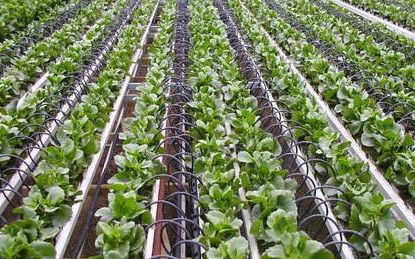Table of Contents
Drip Irrigation
Drip Irrigation is a type of micro-irrigation or low volume irrigation system. In this system, water drips slowly to the root of plants. This type of irrigation can work from above the soil surface or below the soil surface.
Drip irrigation systems decrease water consumption by fifty percent. In This type of irrigation, water applications are continuous which gives a more favorable moisture level for the plants to flourish.

The main aim of drip irrigation is to provide water into the root zone of plants without any significant loss of water due to evaporation.
Uses of Drip Irrigation System
Drip Irrigation is used to provide irrigation in farms, commercial greenhouses, residential gardeners. It can also be exploited where there is water scarcity. Drip irrigation is suitable for roots of crops and trees like coconut and grapes, berry, citrus, strawberries, sugarcane, cotton, maize, and tomatoes.
Advantages of Drip Irrigation System
- It minimizes the loss of water due to evaporation.
- It reduces fertilizers loss.
- It provides equal irrigation to each plant in the field.
- The uneven and irregular surface can be easily irrigated.
- Drip irrigation is controlled irrigation and efficiency can be increase and decrease.
- Soil erosion and weed growth are very less.
- Yield farming is maximum.
- No need to level the ground surface.
- Energy cost is diminished as it is worked in lower pressure than other irrigation methods.
Disadvantages of Drip Irrigation System
- The initial cost of installation is very high.
- Sun rays affect the irrigation tubes and can be broken due to excessive heat.
- Plastic tubes can melt due to sun heat and further it mix in the soil which reduces the fertility of the soil.
